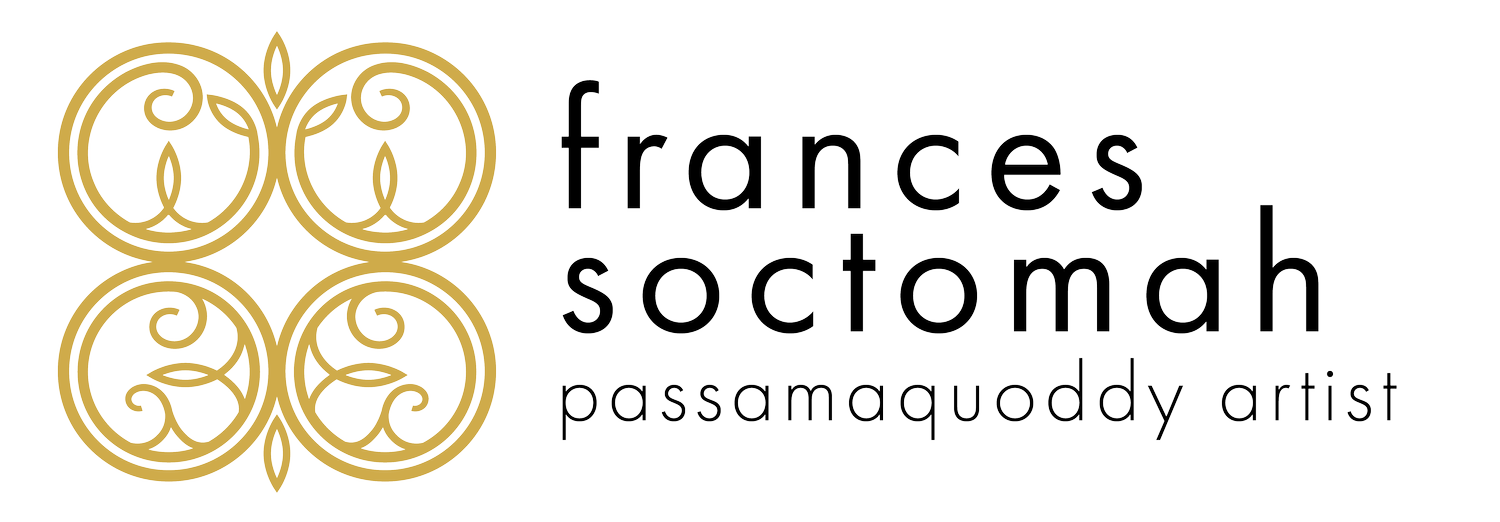biography
Frances Soctomah (she/her) is a Peskotomuhkati (Passamaquoddy) artist from Motahkomikuk who engages video, audio, animation, graphic art, and traditional Wabanaki arts practices to explore and articulate relationships between people, Mother Earth, and our non-human relatives. Family, memory, responsibility, reciprocity, and interconnection are concepts often woven throughout her work. She grounds her practice in story, incorporating teachings from conversations with her family and community members.
Frances is one of eleven children who come from a long line of Passamaquoddy artistry. She began her journey as an artist at age seven when her late-grandmother Molly Neptune Parker – a renowned basketmaker and matriarch of four generations of weavers – began teaching her to make brown ash and sweetgrass baskets. While learning to weave fancy baskets in styles passed down to her family through generations, Molly shared stories of growing up in Motahkomikuk and the many places she lived. She passed down teachings from their ancestors, often reflecting on how our relationships with each other have shifted through time. The stories of community and connection that were woven during their time together inspired Frances to seek out other teachers in her community. She later apprenticed with Gabriel Frey, a Passamaquoddy cultural knowledge carrier, to expand her knowledge of basketmaking and harvesting practices as well as Jennifer Sapiel Neptune, a Penobscot cultural knowledge carrier, to learn traditional bead embroidery techniques.
Creating in community paved the way for Frances to expand her arts practice to include digital material, centering and amplifying voices from her community and through her work. In 2019 she enrolled in the Intermedia Master of Fine Arts program at the University of Maine. She is expected to complete her studies in December 2022.
In addition to her creative practice, Frances is committed to supporting spaces for Wabanaki artists to create, connect, thrive, and be seen. She is active in art, museum, and nonprofit circles where she advocates for cultivating sustaining relationships with Wabanaki artists.

